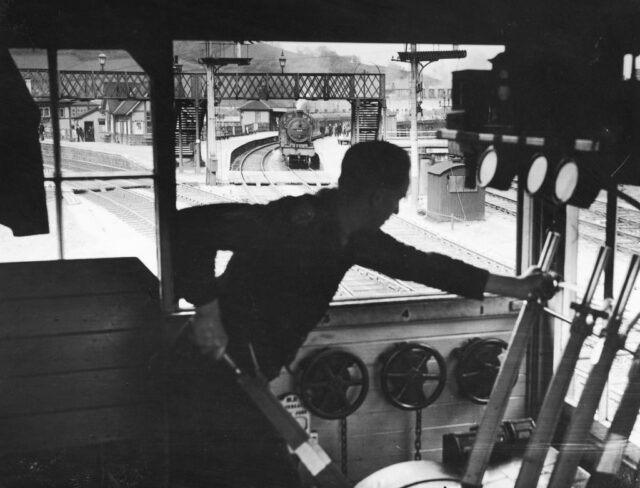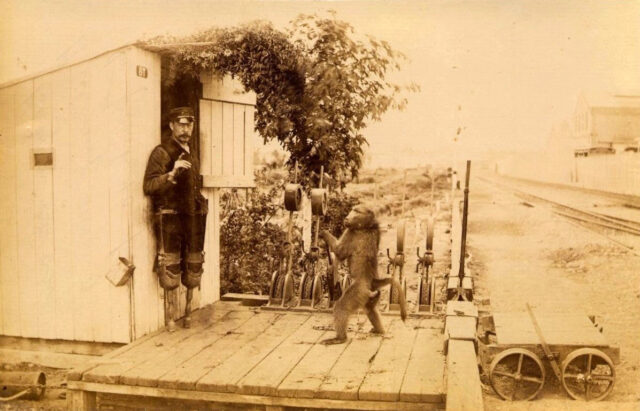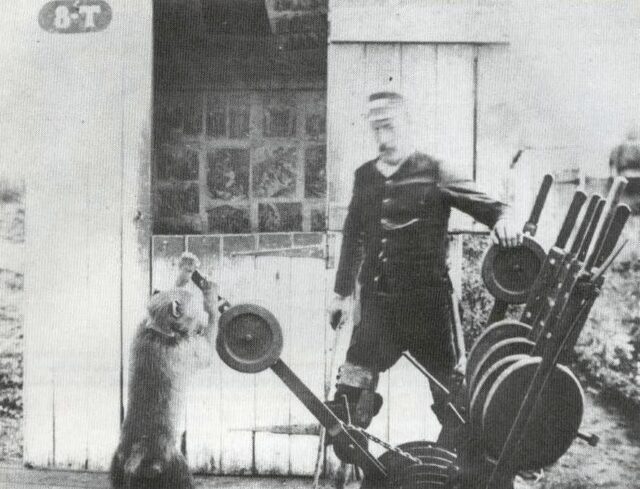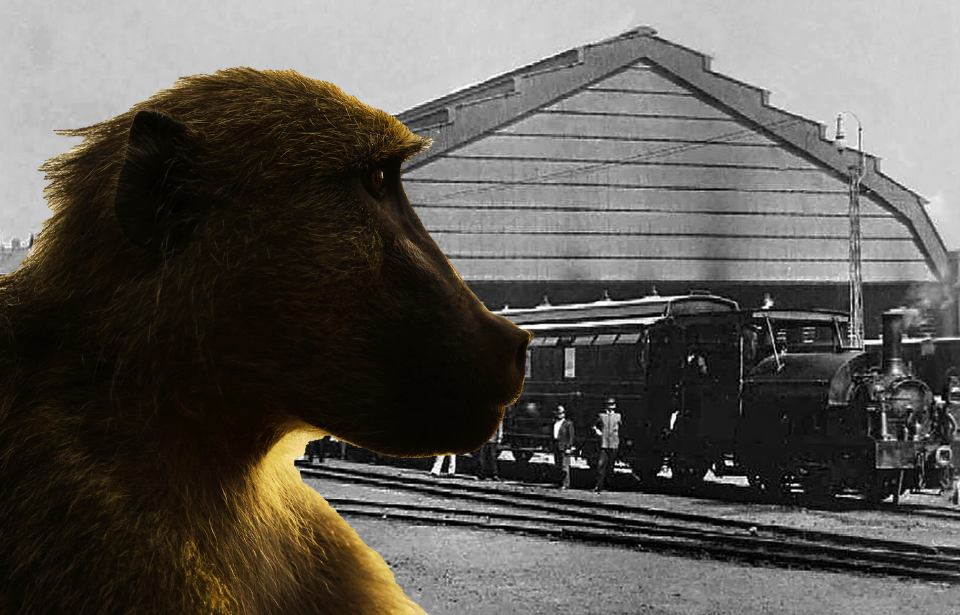You may have heard, “Hey, a monkey can do my job” as a way to describe a position that isn’t too challenging. However, in the late 19th century there was a man named James Wide who proved it when his job as signalman at a railway station in Cape Town, South Africa, was done by a Chacma baboon named Jack.
Jack came into the picture after a tragic event in 1877, when Wide lost both of his legs in a terrible accident. Wide was employed by the Cape Government Railways as a guard. In a period of 10 years working as a guard, Wide mastered jumping between and onto moving trains, which earned him the nickname “the Jumper.” Wide lost both of his legs after he mis-timed one attempt.
Wide landed on the tracks and wasn’t able to move in time before an 80-ton car smashed into his shins and feet. After Wide recovered from having his legs amputated below the knees, he created himself a pair of peg legs and pleaded for his employers to give him any kind of job at the station. The railway station’s superiors were sympathetic and gave him the job of signalman. This position put him in charge of conveying information to conductors via the various signals placed on the tracks.

The job required little physical activity and moderate stamina since it could be done while sitting in a chair. Nevertheless, Wide still needed someone to assist him in getting to and from work.
The ever-persistent Wide first tried to make a trolley that he could sit on. The trolley was a practical solution, but it was still hugely tiring for him, so he started searching for an alternative.
According to the 1890 edition of the science journal Nature, Wide found the answer to this problem at his local market in 1881, when he spotted a baboon leading an oxen cart. The curious Wide contacted the animal’s owner and learned that the baboon, who was called Jack, was trained to obey several basic commands as well as to push and pull heavy loads due to his physical strength. Wide didn’t find it hard to imagine Jack as his new assistant, helping him in his daily routine, so he asked the owner if he’d be willing to part with the animal and let him train it.
The owner, presumably either moved by Wide’s condition or offered an excellent price for the baboon, agreed and gave upon Jack. As stated in Nature, when the owner gave Jack to Wide he advised him to give Jack a few sips of Cape Brandy before bedtime each night if he wanted him to work the following day. Without it, he said, Jack would spend the days with a long face or even become rebellious.

In the beginning, Wide simply trained Jack to push his trolley between his home and the signal box where he worked. After a while, Wide realized that Jack was much more clever than he’d thought and could easily acquire more difficult skills. For example, one of Wide’s duties was to grab a key from a locked box and deliver it to the train drivers when they whistled four times. Jack quickly picked up on this and began grabbing the key instead of Wide when he heard the whistles and delivered it to the drivers. Soon, Jack also learned how to operate the levers in the signal box that controlled the sections of the tracks.
Jack was a fast learner of a system that relied on audio signalizing. There were a few levers that controlled certain pieces of track that would be pulled in a certain order, based on whether a driver tooted one, two, or three times. One might say that a dog can also be trained this way, given the right setup. But Jack had something that dogs don’t have–opposable thumbs. At the station, drivers and employees became accustomed to the sight of a disabled man and a baboon working in tandem.
However, some passengers didn’t feel comfortable with the idea of literally leaving their lives in the hands of a baboon. One such prominent member of the public filed a complaint based on Jack’s work at the signal hut. Consequently, Jack and Wide were fired. Wide appealed to his employers to rethink their decision, firmly arguing in favor of Jack’s reliability. Several more of his colleagues decided to support him, saying that, in their experience, Jack was doing a pretty good job.

The company decided to test the baboon by giving him improbable scenarios to prove his problem-solving strategies and preparedness. The test involved playing a series of rapidly changing whistles to Jack after placing him in front of a set of levers with the same layout as those in the signal hut. Jack passed the test with impeccable results and the company gave his and Wide’s jobs back.
Becoming an official employee of the Cape Government Railways, Jack received a salary of 20 cents per day, or about $5 today. On Saturdays, he was given a bonus paycheck of beer and snacks. Hiring Jack proved to be a smart move for the company, since their station soon became a tourist hotspot in Cape Town, bringing in people from all over who wanted to see the signalman baboon. Nature reported that he was also a strong guard who chased away vandals and trespassers, and sometimes he even handled the station’s gardening work or worked as a key guard.
More from us: A Near-Fatal Train Crash Left Charles Dickens Traumatized for the Rest of His Life
In 1890, Jack contracted tuberculosis and died. The baboon had worked for nine years for the railway company.
